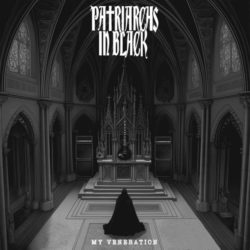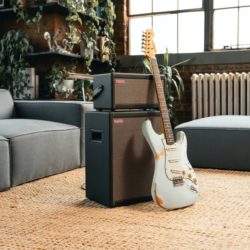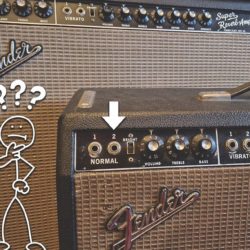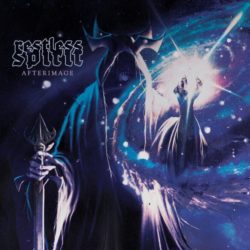
FRANK HANNON Says TESLA ‘Wasn’t Really Affected’ By Rise Of Grunge In 1990s
TESLA guitarist Frank Hannon has weighed in on the never-ending debate about how the rise of grunge in the early 1990s forced most hard rock bands off the radio and MTV, with album and tour sales plummeting. Asked in a new interview with Real Music With Gary Stuckey how he and his bandmates were aff…
Read more »
My Veneration
The follow-up to last year’s much praised “Reach For The Stars” debut, “My Veneration” suggests that Dan Lorenzo (HADES / CASSIUS KING / VESSEL OF LIGHT) and Johnny Kelly (TYPE O NEGATIVE / DANZIG) are becoming a very reliable source of dark, gritty and unpredictable metal. PATRIARCHS IN BLACK are a…
Read more »
RAINBOW’s RONNIE ROMERO Is ‘Very Disappointed’ In How ‘Certain Legendary Musicians’ Behave On Social Media
In a new interview with Steve Mascord’s WhiteLineFever TV, Ronnie Romero spoke about how deals with the online criticism he has received from fans of the various bands he has played with, including RAINBOW, MSG and VANDENBERG. The 41-year-old singer, who is originally from Chile but is now settled i…
Read more »
Joe Bonamassa and Seymour Duncan Launch “The Bludgeon,” Slug and El Diablo Pickups
Joe Bonamassa and Seymour Duncan collaborate on three new pickup sets.”The Bludgeon” 1951 Nocaster Set”The Bludgeon” is Joe’s 1951 Fender Nocaster, and it came into his life in 2014. He has played it in almost every show he has performed since. When Joe found this guitar, a P.A.F Humbucker had already been installed in the neck, which paired “in a beautiful way” with the flat-pole single-coil bridge pickup for a uniquely inspiring sound and “the most dynamic instrument” he has ever played. When the Fender Custom Shop recreated “The Bludgeon” for a limited run in 2021, Seymour Duncan was honored to replicate the pickups to Joe’s high standards. The Seymour Duncan Custom Shop team duplicated the warm sounding P.A.F neck humbucker with a rough cast Alnico 2 magnet. The original tele bridge pickup was incredibly worn, and also featured Alnico 2 magnets. Next, the team captured the bright response and hot output that makes the bridge pickup so special to Joe – especially when working in tandem with the neck humbucker.The first 250 are relic’d with the special Antiquity aging process for a vintage look, and their bottom plates have been signed by Joe, Seymour W. Duncan, and our very own Queen of Tone, Maricela “MJ” Juarez, who winds each of these in our Custom Shop. After these 250 limited edition sets are sold, “The Bludgeon” pickups will be available with standard Custom Shop cosmetic options so everyone can experience and enjoy the unique sonic qualities these pickups offer. SlugSince the late 60’s when heavy metal emerged, guitarists have been looking for ways to deliver bigger and heavier riffs as the genre evolved. When we designed the SLUG, we wanted it to be the gnarliest and most powerful passive humbucker we’ve ever produced.Oozing an immense 48k DCR and double ceramic magnets, SLUG delivers a monstrous sound that is perfect for the slow charging, bass heavy, riffage that dominates stoner and doom metal. Slightly longer than a standard humbucker, SLUG comes with a custom mounting ring to accommodate its 2.87” bobbin length. If mounting in a pickguard, slight modification may be required.El DiabloFor two decades, El Diablo has been an artist favorite and one of our best-selling Custom Shop made-to-order models. It sounds as vicious as it looks. It holds a super-hot wind and the twin Alnico 2 blade magnets deliver the “what you see is what you get” bold aesthetics that separate it from all other high-output humbuckers.The blade magnets and extra hot DC resistance make the El Diablo one of the best pickups we make for players that want thick and tight saturation for percussive rhythms and warm leads that push through the mix. Slightly longer than a standard humbucker, the El Diablo comes with custom mounting ring. If mounting in a pickguard slight modification may be required. More info: seymourduncan.com.
Read more »
OTEP SHAMAYA Explains How She Deals With Online Trolls
In a new interview with “The Garza Podcast”, hosted by SUICIDE SILENCE guitarist Chris Garza, OTEP frontwoman Otep Shamaya spoke about how she deals with online trolls. She said (as transcribed by BLABBERMOUTH.NET): “I don’t even read YouTube comments. Nope. Or Blabbermouth. Yeah, I don’t read [any…
Read more »
Positive Grid Announces the Spark CAB
A 140-Watt powered speaker cabinet designed to maximize Spark series smart guitar practice amps.This new powered guitar amp speaker cabinet is optimized to work seamlessly with all Spark series practice amps, as well as other amps or gear with a line-level output. Durable, yet lightweight and portable, it offers high-quality sound for live performances, recording sessions, home practice and more.Spark CAB is a Class D powered FRFR (full range, flat response) cabinet delivering clear, precise and transparent audio to capture the intricate nuances of every guitar tone. With its ample power and headroom, guitarists can also rely on Spark CAB’s authentic feel and high volume output. Convenient performance-based features include: Dedicated 3.5mm stereo input to connect Spark smart guitar amps (Spark 40/MINI/GO), cable includedStereo combo XLR/TRS inputs and a balanced XLR output for connecting other gearContour switch to emphasize low and high frequencies for more balanced sound at low volumeGround lift switch to reduce unwanted hum or noiseIn addition, a 10-inch woofer and 2 high-frequency dome tweeters, plus full audio spectrum (45-20,000 Hz) frequency response allow Spark CAB to offer exceptional performance for all types of guitar. Spark CAB is also a power hub. It features an onboard DC power output and USB-C output for connecting a Spark series amp or a mobile device such as a tablet or phone, with no other power source needed. Spark CAB will be available to pre-order soon for a special price of USD $269. For more information, visit: positivegrid.com/products/spark-cab.
Read more »
The 10 Biggest Problems With Vintage Fender Amps
Vintage Fender amps have a strong reputation among players in many genres. The brand is instantly associated with an endless list of great bands which created music that has stood the test of time. In terms of general tone, Fender’s original amplification strategy—which favors articulate, bright, transparent, and clean sounds—was a winning combination that myriad players still gravitate toward.Through my previous columns in this magazine, I’ve shared the tips and tricks I’ve learned after playing, trading, and servicing old models from the California manufacturer. But today, it’s time for critical thinking. I’m switching sides to share the 10 most annoying things about vintage Fender amps. As usual, I will mostly refer to the black- and silver-panel amps.“It breaks my heart that the original Deluxe Reverbs came with a weak and farty Oxford speaker, when it sounds so much better with a more punchy, clear-sounding C12N.”Many of the critiques that I offer here ultimately advocate for simplification. All amp techs know that simple is good. Simple amps are lighter, smaller, cheaper, and have less things that can go wrong in the long run.So, here is my list: Two Jack Inputs I’ve never met anyone who uses the second input. Back in the day, Fender thought we were going to swap guitars between songs without having to adjust the volume knob to compensate for the different pickups’ varied outputs. Wrong assumption.Two Channels I always use the reverb channel, even when using high distortion, at which point I simply turn the reverb down. Except for the Bassman, the normal channel is not needed at all. If all of the dual-channel amps were instead single-channel, like the Princeton Reverb, a lot of tubes and circuit components could be spared, leading to significant cost reduction and simplification of the production line. Even with the black- and silver-panel Bassman, I would prefer a single channel, as long as both the deep and bright switches were available. The only advantage with having a second preamp channel is the possibility to isolate the power amp section and the two preamp sections in diagnosis. But that still doesn’t make it worth it.The Non-Reverb Amps If I was Leo Fender, and I was looking to reduce costs, I would have trimmed my portfolio by eliminating the non-reverb Deluxe, Princeton, Vibrolux, and Pro amps. The rarer versions of these amps are no-frills, cool, and great value for the money. But there are reverb-equipped models that can do everything they do just as well and better. They’re not in as high demand, and they’re less profitable due to lower production numbers. Instead, I would have continued the Vibroverb after 1964, which would do the job as the only 1×15 combo amp in the portfolio. Just admit it: Everyone wants a Vibroverb.RectifiersAs another cost-cutting measure during my imaginary tenure as the founder of Fender, I would consider using a diode rectifier instead of a tube rectifier in all the bigger dual 6L6GC Fender amps. I like sag in tube amps, but I think very few players can really hear the difference between diode and tube rectifiers. Smaller amps intended for earlier breakup may have tube rectifiers, but they’re not essential there, either.Glued and Stapled Baffles in Silver-Panel AmpsI wish Fender had continued the floating baffle in the early ’70s instead of the tightly glued and stapled-in baffles that are found in silver-panel amps post-1971. The screwed-in boards are much easier to repair and replace.MDF BafflesMedium-density fibreboard, or MDF, baffles are consistently the weakest point in Fender’s wooden cabinet construction, and eventually tear apart. I would much prefer a more dependable plywood pine baffle.Small Output TransformersThese are found in both the Bandmaster head and the 1×15 Vibroverb—amps that deserve a firmer low end, and which should have the Super Reverb-class output transformer.Lack of a Bright SwitchIn my opinion, this is an essential EQ function that’s left off of Fender’s smaller amps, like the Princeton Reverb and Deluxe Reverb. Without it, these amps leave me no chance to enhance the details of fingerpicking on a clean tone setting. Lack of Mid ControlThis applies to many Fender amps. The bassy and flabby Pro Reverb would particularly benefit from a better mid EQ, with a much wider tone spectrum.No Jensen C12N Speaker in Deluxe ReverbsWe all know how awesome the Jensens sound in the early black-panel amps, like the C10N in Princetons and Vibroluxes, the C10R in Supers, or the C12N in the Pros and Twins. It breaks my heart that the original Deluxe Reverbs came with a weak and farty Oxford speaker, when it sounds so much better with a more punchy, clear-sounding C12N. So, there you have it: my list of 10 grievances with Fender. If you have more to add, please share your thoughts in our social media channels.
Read more »
The 10 Biggest Problems With Vintage Fender Amps
Vintage Fender amps have a strong reputation among players in many genres. The brand is instantly associated with an endless list of great bands which created music that has stood the test of time. In terms of general tone, Fender’s original amplification strategy—which favors articulate, bright, transparent, and clean sounds—was a winning combination that myriad players still gravitate toward.Through my previous columns in this magazine, I’ve shared the tips and tricks I’ve learned after playing, trading, and servicing old models from the California manufacturer. But today, it’s time for critical thinking. I’m switching sides to share the 10 most annoying things about vintage Fender amps. As usual, I will mostly refer to the black- and silver-panel amps.“It breaks my heart that the original Deluxe Reverbs came with a weak and farty Oxford speaker, when it sounds so much better with a more punchy, clear-sounding C12N.”Many of the critiques that I offer here ultimately advocate for simplification. All amp techs know that simple is good. Simple amps are lighter, smaller, cheaper, and have less things that can go wrong in the long run.So, here is my list: Two Jack Inputs I’ve never met anyone who uses the second input. Back in the day, Fender thought we were going to swap guitars between songs without having to adjust the volume knob to compensate for the different pickups’ varied outputs. Wrong assumption.Two Channels I always use the reverb channel, even when using high distortion, at which point I simply turn the reverb down. Except for the Bassman, the normal channel is not needed at all. If all of the dual-channel amps were instead single-channel, like the Princeton Reverb, a lot of tubes and circuit components could be spared, leading to significant cost reduction and simplification of the production line. Even with the black- and silver-panel Bassman, I would prefer a single channel, as long as both the deep and bright switches were available. The only advantage with having a second preamp channel is the possibility to isolate the power amp section and the two preamp sections in diagnosis. But that still doesn’t make it worth it.The Non-Reverb Amps If I was Leo Fender, and I was looking to reduce costs, I would have trimmed my portfolio by eliminating the non-reverb Deluxe, Princeton, Vibrolux, and Pro amps. The rarer versions of these amps are no-frills, cool, and great value for the money. But there are reverb-equipped models that can do everything they do just as well and better. They’re not in as high demand, and they’re less profitable due to lower production numbers. Instead, I would have continued the Vibroverb after 1964, which would do the job as the only 1×15 combo amp in the portfolio. Just admit it: Everyone wants a Vibroverb.RectifiersAs another cost-cutting measure during my imaginary tenure as the founder of Fender, I would consider using a diode rectifier instead of a tube rectifier in all the bigger dual 6L6GC Fender amps. I like sag in tube amps, but I think very few players can really hear the difference between diode and tube rectifiers. Smaller amps intended for earlier breakup may have tube rectifiers, but they’re not essential there, either.Glued and Stapled Baffles in Silver-Panel AmpsI wish Fender had continued the floating baffle in the early ’70s instead of the tightly glued and stapled-in baffles that are found in silver-panel amps post-1971. The screwed-in boards are much easier to repair and replace.MDF BafflesMedium-density fibreboard, or MDF, baffles are consistently the weakest point in Fender’s wooden cabinet construction, and eventually tear apart. I would much prefer a more dependable plywood pine baffle.Small Output TransformersThese are found in both the Bandmaster head and the 1×15 Vibroverb—amps that deserve a firmer low end, and which should have the Super Reverb-class output transformer.Lack of a Bright SwitchIn my opinion, this is an essential EQ function that’s left off of Fender’s smaller amps, like the Princeton Reverb and Deluxe Reverb. Without it, these amps leave me no chance to enhance the details of fingerpicking on a clean tone setting. Lack of Mid ControlThis applies to many Fender amps. The bassy and flabby Pro Reverb would particularly benefit from a better mid EQ, with a much wider tone spectrum.No Jensen C12N Speaker in Deluxe ReverbsWe all know how awesome the Jensens sound in the early black-panel amps, like the C10N in Princetons and Vibroluxes, the C10R in Supers, or the C12N in the Pros and Twins. It breaks my heart that the original Deluxe Reverbs came with a weak and farty Oxford speaker, when it sounds so much better with a more punchy, clear-sounding C12N. So, there you have it: my list of 10 grievances with Fender. If you have more to add, please share your thoughts in our social media channels.
Read more »
TOMMY VICTOR: WAYNE STATIC ‘Got Mad At Me’ When I Called Him Out For Not Acknowledging PRONG’s Influence
In a new interview with Heavy Galaxy, PRONG leader Tommy Victor was asked about Dino Cazares’s recent comment that FEAR FACTORY not belonging to any subgenre ultimately hurt the band and whether the same could be said about PRONG. Tommy responded (as transcribed by BLABBERMOUTH.NET): “I agree with w…
Read more »
Full Album Stream: Restless Spirit – ‘Afterimage’
Hear Long Island stoner doom trio Restless Spirit genuflect at the altar of the almighty riff on new full-length Afterimage.
The post Full Album Stream: Restless Spirit – ‘Afterimage’ appeared first on Decibel Magazine.
